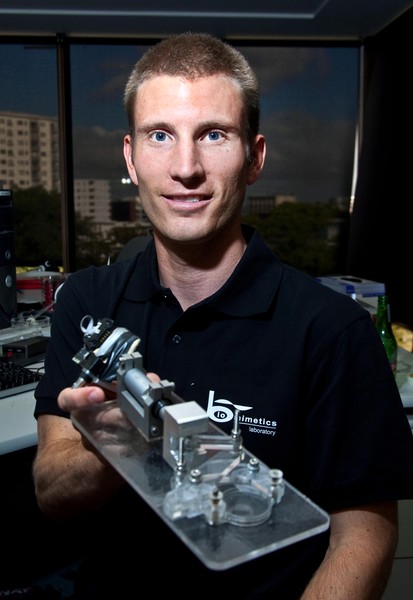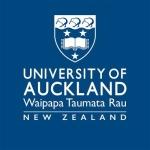Student designs tough workout for bone cells

A special “gym” designed by University of Auckland student Casey Jowers to exercise human bone cells in the laboratory could help to develop better drug therapies for osteoporosis and other bone diseases.
Casey, a research assistant at the University’s Auckland Bioengineering Institute, developed the cell gym device as part of his master’s degree in engineering. The cell gym is made up of a computer-controlled tissue culture plate where bone forming cells called osteoblasts are grown on a clear rubber-like material and then stretched to exercise them.
The idea, says Casey, was to develop a device that could be used to help understand exactly how the body’s bone cells respond to physical strain to maintain good bone and joint health.
“We know that weight-bearing exercises such as walking and resistance exercises like lifting weights help improve bone density. With the cell gym, we can now mimic these physical activities in the laboratory and see what’s going on at a cellular level.”
To test the cell gym out, Casey, with the help of the Laboratory Bone Research Group at the University’s Department of Medicine (directed by Professor Jillian Cornish) picked out six different genes known to play a part in bone health and measured the levels of these genes when the cells were stretched.
“Some genes have been shown to improve the performance of osteoblasts, while other genes can be bad for bone health. If the latter genes are expressed in large numbers, they tend to stimulate the production of osteoclasts - bone cells which are responsible for the breakdown of bone tissue,” says Casey.
Casey’s supervisor, Dr Iain Anderson of the Auckland Bioengineering Institute’s Biomimetics Lab, says the cell gym is designed to deliver closely controlled strains to bone cells in an artificial environment such as a laboratory culture dish.
“The only other similar commercial devices available are more appropriate for cells that live in soft tissues such as ligaments, tendons and muscles – not bone,” says Dr Anderson.
Dr Anderson and Professor Cornish were recently awarded a University cross-faculty award, along with neuroscientist Professor Michael Dragunow, to develop new devices for supporting living cells and delivering physical forces to them. Part of the funding from this award will go towards helping Casey refine the cell gym, including making improvements to the material that the cells grow on.
“The cell gym technology has many applications, especially in the field of drug discovery,” says Casey. “It will allow companies to see how their drugs react in a mechanical environment. This is especially important when designing drugs for osteoporosis, as drug therapies combined with physical exercise are often recommended to patients.”
